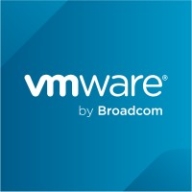

Turbo360 and VMware Tanzu Platform are competing in the cloud management category. Turbo360 is stronger in pricing and support, while VMware Tanzu shines in features, providing a higher value proposition.
Features: Turbo360 is characterized by its robust monitoring, integration capabilities targeted at serverless environments, and a centralized management suite. VMware Tanzu Platform offers comprehensive application lifecycle management, multi-cloud support, and broad application versatility.
Ease of Deployment and Customer Service: Turbo360 emphasizes quick deployments with a user-friendly setup and accessible customer service. VMware Tanzu requires complex configurations for enterprise applications, backed by extensive documentation and professional services.
Pricing and ROI: Turbo360 offers competitive pricing with considerable ROI by minimizing initial setup costs, making it suitable for simpler setups. VMware Tanzu, despite its higher price, delivers high ROI through rich features and scalability, valuable for complex, large-scale environments.
| Product | Market Share (%) |
|---|---|
| VMware Tanzu Platform | 1.1% |
| Turbo360 (Formerly Serverless360) | 0.5% |
| Other | 98.4% |

| Company Size | Count |
|---|---|
| Small Business | 10 |
| Midsize Enterprise | 3 |
| Large Enterprise | 10 |
Turbo360 (Formerly Serverless360) is an advanced Cloud Management platform that empowers you with significant Azure Cost savings and Infra Monitoring for complex Azure Environments. Our customers have experienced annual savings of up to 30% through advanced cost monitoring, granular analysis, optimization insights, and reduced incident resolution time by 80% through holistic infra monitoring across multiple Azure resources with business context. Also, our platform stands out by offering all the necessary features for incorporating FinOps practice into your organization, ensuring an accurate and granular source of truth about costs for all your stakeholders. By seamlessly offering infrastructure monitoring and cost management in one place, we aim to help maximize your ROI on Azure investments.
Our Core features:
VMware Tanzu Platform is designed for cloud-native development and management of Kubernetes, CI/CD processes, microservices, and containerized workloads. It supports deployments both on cloud and on-premises, providing centralized management via Mission Control.
VMware Tanzu Platform offers seamless integration with vSphere, ESX, and vSAN, supporting centralized cluster management and lifecycle management. The platform provides a GUI for monitoring CI/CD pipelines and network policies, enhancing multi-tenancy and Day 2 operations. Users can easily manage Kubernetes clusters, monitor applications, and integrate with tools such as GitHub, GitLab, Cloud Foundry, and Azure. It ensures compliance and security for service providers, financial institutions, and businesses.
What are the key features of VMware Tanzu Platform?
What benefits and ROI should users look for in VMware Tanzu Platform reviews?
Industries such as financial institutions, service providers, and businesses requiring rigorous compliance and security deploy VMware Tanzu Platform. These entities benefit from centralized management, streamlined DevOps processes, and integrated tools, enhancing their capabilities in cloud-native developments and containerized workloads.
We monitor all Cloud Management reviews to prevent fraudulent reviews and keep review quality high. We do not post reviews by company employees or direct competitors. We validate each review for authenticity via cross-reference with LinkedIn, and personal follow-up with the reviewer when necessary.